OAPI – Patents, trademarks and designs

OAPI patent
OAPI national phase patents may be filed up to 30 months from the priority date of the patent application. The OAPI patent filing fee is from US$2,141, together with a US$336 first year maintenance fee.
An OAPI patent automatically covers:
Benin, Burkina Faso, Cameroon, Central African Republic, Chad, Comoros, Congo, Equatorial Guinea, Gabon, Guinea, Guinea Bissau, Ivory Coast, Mali, Mauritania, Niger, Senegal and Togo.
(See information about OAPI member states)
To file an OAPI national phase patent, we are required to submit the following documents:
- details of the applicant;
- a Power of Attorney. Note that legalization or notarization is not required;
- a copy of the patent specification in English or French;
- sequence listing (if applicable)
- a copy of the assignment (if any). Note that legalization or notarization is not required; and
- a certified copy of the priority document.
As from January 2025, OAPI patents are subject to substantive examination. Once granted the ARIPO patent results in a national phase patent in each of the member countries, which remains in force for 20 years (with annual maintenance fees payable to OAPI).
OAPI does not require marking or use, leaving this to the national laws of the member countries. Enforcement of an OAPI patent is also regulated by the national laws of the member countries.
The OAPI patent excludes South Africa and Nigeria, which countries are best covered by filing a SANi patent.
See: Compare ARIPO, SANi and OAPI patents.
OAPI trademark
OAPI recognizes Goods, Services, Collective and Geographical Indication marks.
Although an OAPI trademark may be filed in respect of multiple classes, Goods and Service classes may not be combined. Once registered, the OAPI trademark covers:
Benin, Burkina Faso, Cameroon, Central African Republic, Chad, Comoros, Congo, Equatorial Guinea, Gabon, Guinea, Guinea Bissau, Ivory Coast, Mali, Mauritania, Niger, Senegal and Togo.
To file an OAPI trademark, we are required to submit the following documents:
- details of the applicant;
- a Power of Attorney. Note that legalization or notarization is not required;
- a representation of the mark;
- a description of the goods or services; and
- a certified copy of the priority document.
OAPI trademarks are best filed through the GlobalIPCo system at a cost of:
- Euro 730 for the first class; and
- Euro 165 for each additional class.
OAPI trademarks remain in force for periods of 10 years, renewable indefinitely.
OAPI does not require marking. Enforcement of an OAPI trademark is also regulated by the national laws of the member countries.
See our comprehensive OAPI trademark manual.
OAPI design
Although OAPI design law requires absolute novelty, it is permitted to disclose the design not more than 12 months prior to filing at an officially recognized international exhibition.
An OAPI design automatically covers:
Benin, Burkina Faso, Cameroon, Central African Republic, Chad, Comoros, Congo, Equatorial Guinea, Gabon, Guinea, Guinea Bissau, Ivory Coast, Mali, Mauritania, Niger, Senegal and Togo.
An OAPI design may cite multiple classes, and include various embodiments, provided that the embodiments fall within the same class or constitute a set of articles. See our OAPI design costing tool for a good indication of OAPI design costs.
To file an OAPI design, we are required to submit the following documents:
- details of the applicant;
- a Power of Attorney. Note that legalization or notarization is not required;
- drawings / images of the design;
- description of articles to which the design is to be applied;
- a copy of the assignment (if any). Note that legalization or notarization is not required; and
- a certified copy of the priority document.
Once granted, the OAPI design will remain in force for 15 years (with quinquennial (5 year) maintenance fees).
OAPI does not require working, but in order to enforce rights, marking is required. Enforcement of an OAPI design is also regulated by the national laws of the member countries.
